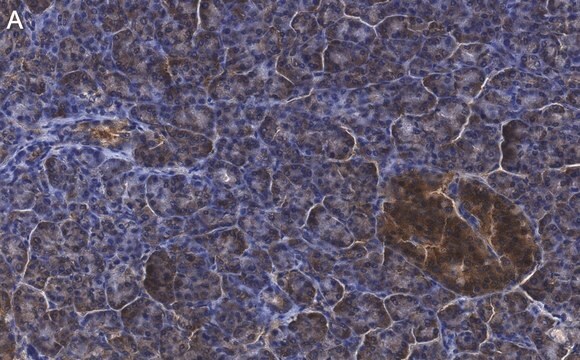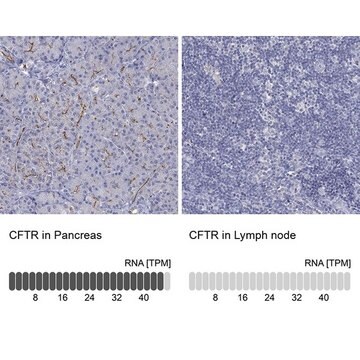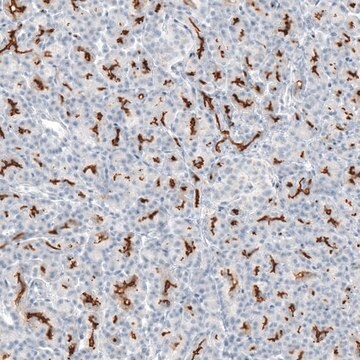MAB3480
Anti-CFTR Antibody, a.a. 1370-1380, clone M3A7
clone M3A7, Chemicon®, from mouse
Synonym(s):
CFTR
About This Item
Recommended Products
biological source
mouse
Quality Level
antibody form
purified immunoglobulin
antibody product type
primary antibodies
clone
M3A7, monoclonal
species reactivity
human
should not react with
mouse, shark, rat
manufacturer/tradename
Chemicon®
technique(s)
immunocytochemistry: suitable
immunoprecipitation (IP): suitable
western blot: suitable
isotype
IgG1
NCBI accession no.
UniProt accession no.
shipped in
wet ice
target post-translational modification
unmodified
Gene Information
human ... CFTR(1080)
General description
Cystic Fibrosis (CF) is a common lethal genetic disease caused by mutations of the gene coding for the cystic fibrosis transmembrane conductance factor, a cAMP regulated chloride channel. Approximately 70% of all CF cases share the deletion of a phenylalanine at position 508 (delta F508) which results in abnormal chloride transport. Since the CF mutation is lethal, most often by lung and liver disease, it raises the question of why this genetic disease remains as common as it is. One possible explanation is that Salmonella typhi has been shown to use CFTR to enter intestinal epithelial cells and that delta F508 heterozygote and homozygote mice showed 86% and 100% reductions in S.typhi intestinal submucosal uptake.
Specificity
Immunogen
Application
Neuroscience
Ion Channels & Transporters
Immunoprecipitation
Immunofluorescence
T84 adenocarcinoma cells are a good positive control
Immunohistochemistry: 1-50μg/mL on acetone fixed frozen sections. Does not work on paraffin embedded tissue.
Optimal working dilutions must be determined by the end user.
Target description
Physical form
Storage and Stability
Analysis Note
T84 whole cell extract
Other Notes
Legal Information
Disclaimer
Not finding the right product?
Try our Product Selector Tool.
recommended
Storage Class Code
10 - Combustible liquids
WGK
WGK 2
Flash Point(F)
Not applicable
Flash Point(C)
Not applicable
Certificates of Analysis (COA)
Search for Certificates of Analysis (COA) by entering the products Lot/Batch Number. Lot and Batch Numbers can be found on a product’s label following the words ‘Lot’ or ‘Batch’.
Already Own This Product?
Find documentation for the products that you have recently purchased in the Document Library.
Our team of scientists has experience in all areas of research including Life Science, Material Science, Chemical Synthesis, Chromatography, Analytical and many others.
Contact Technical Service








